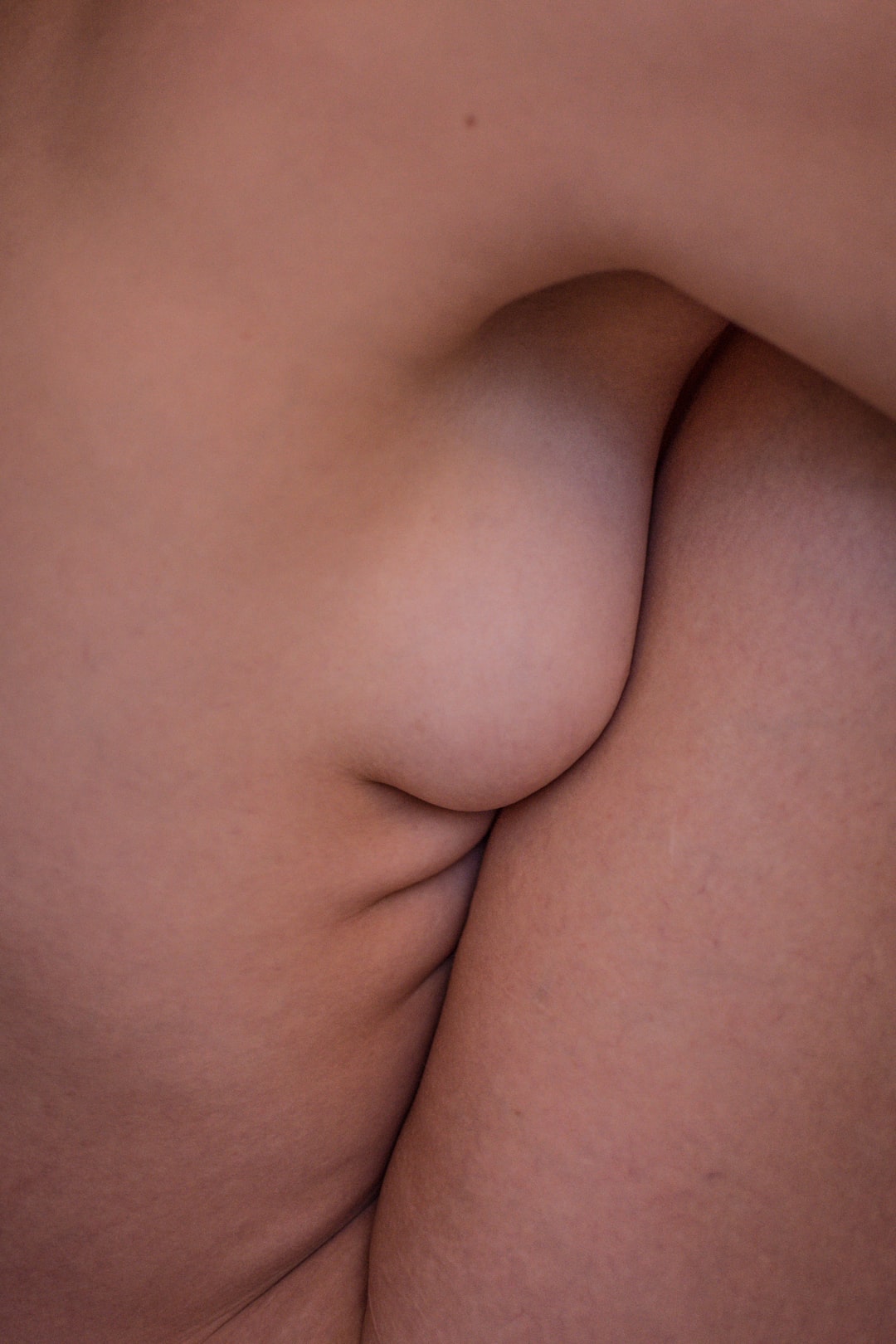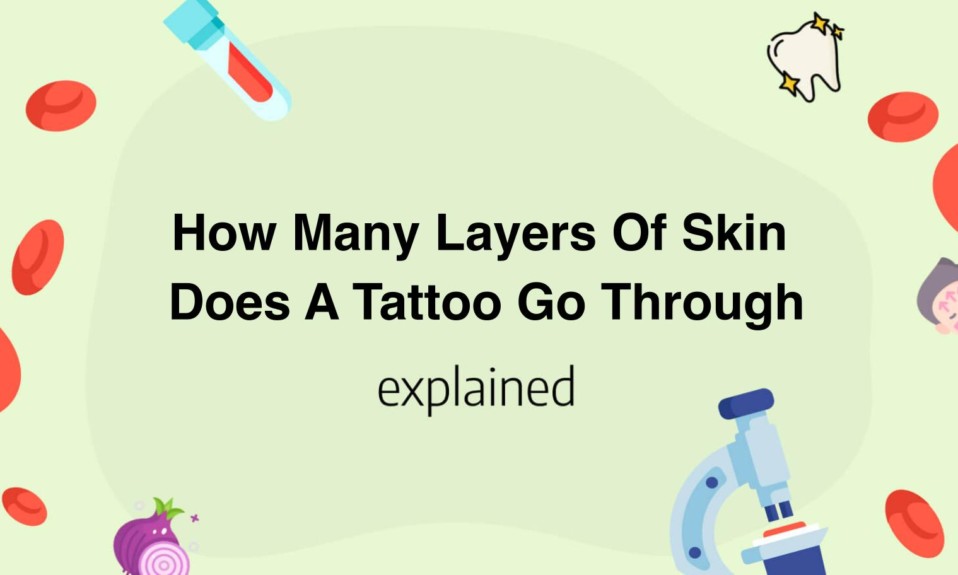Tattoos have become increasingly popular in recent years as a way for people to express themselves through body art.
While many individuals understand that the process involves tattooing ink into the skin, some may not be aware of how many layers of skin the needle actually penetrates.
Getting a tattoo involves piercing the top layer of skin, called the epidermis, and injecting ink into the second layer, known as the dermis.
Understanding this process is essential for individuals considering getting a tattoo and can help ensure that they have a positive and safe experience.
- The ink is injected into the dermis layer, which is the second layer of skin.
- The tattoo needle penetrates through the epidermis, which is the outermost layer of skin.
- The epidermis layer peels away and sheds over time, taking some of the ink with it.
- If the tattoo is deep enough, the ink may also reach the hypodermis layer, which is the deepest layer of skin.
- The number of layers a tattoo goes through ultimately depends on the technique of the tattoo artist.
The Anatomy of the Skin
The skin is the largest organ of the human body.
It serves as a protective barrier against external factors such as bacteria, viruses, and environmental pollutants.
It also regulates body temperature, releases toxins, and synthesizes vitamin D.
The skin is composed of three main layers – the epidermis, dermis, and subcutaneous layer.
The epidermis is the outermost layer of the skin and it is responsible for regulating moisture levels and protecting the body from harmful UV rays.
It is composed of several layers of cells, including melanocytes which produce the pigment melanin that gives the skin its color.
The dermis is the layer located underneath the epidermis.
It contains blood vessels, nerve endings, and hair follicles.
The dermis also contains collagen and elastin fibers, which give the skin its strength and flexibility.
Collagen provides support to the skin while elastin allows it to stretch and return to its original shape.
The subcutaneous layer is the deepest layer of the skin.
It consists of fat cells and connective tissue which provide insulation, cushioning, and support to the body.
The skin is also home to various glands, including sweat glands and sebaceous glands.
Sweat glands regulate body temperature by secreting sweat onto the skin’s surface.
Sebaceous glands produce oil that lubricates the skin and hair, but excess oil can cause acne.
Maintaining healthy skin is essential for overall well-being.
Proper hydration, a balanced diet, and avoiding excessive sun exposure are all important factors in maintaining healthy skin.
Using gentle cleansers and moisturizers can also help protect the skin’s natural barrier.
It is important to avoid harsh chemicals and fragrances that can irritate the skin.
In conclusion, understanding the anatomy of the skin is important for proper care and maintenance.
By taking care of our skin, we can protect it from external factors and maintain its function as a crucial organ in our body.
The Skin as a Natural Barrier
The skin is the body’s largest organ and serves as a natural barrier against external factors such as bacteria, viruses, and harmful substances.
It also helps regulate body temperature and prevents dehydration.
The skin is composed of three layers: the epidermis, dermis, and hypodermis.
The epidermis is the outermost layer and is responsible for creating a waterproof barrier to protect the body from water loss and harmful substances.
It also contains melanocytes which give the skin its color and protect against harmful UV rays.
The dermis is the middle layer and contains hair follicles, sweat glands, and oil glands.
It is responsible for providing support to the epidermis and helping regulate body temperature.
The hypodermis is the deepest layer and is made up of adipose tissue which insulates the body and provides cushioning.
Many products claim to improve the skin’s natural barrier function, but it is important to remember that the skin is capable of protecting itself.
However, certain lifestyle choices can weaken this natural barrier.
For example, smoking and exposure to UV radiation can damage the skin and reduce its ability to protect itself.
In addition, a diet lacking in essential nutrients such as vitamin C and E can also impair the skin’s natural barrier function.
To maintain optimal skin health, it is important to adopt healthy habits such as eating a balanced diet high in antioxidants and healthy fats, staying hydrated, and protecting the skin from UV radiation through sunscreen and protective clothing.
Proper skincare can also help support the skin’s natural barrier function.
This includes gentle cleansing with a pH-balanced cleanser, moisturizing to prevent water loss and maintain hydration, and avoiding harsh chemicals and exfoliants that can damage the skin.
In summary, the skin serves as a natural barrier to protect the body from external factors.
While certain lifestyle choices can weaken this natural barrier, adopting healthy habits and proper skincare can help support optimal skin health.
By prioritizing the health of our skin, we can enjoy its many benefits and protect ourselves from harm.

The Relationship Between the Skin and Tattoos
Skin and tattoos share a unique and intricate relationship.
Tattoos are essentially a form of art that involves injecting ink into the skin’s dermis layer, leaving a permanent design.
Tattoos have been a symbol of self-expression and artistry for centuries.
However, the process of injecting ink into the skin can have long-term effects on the skin’s health and appearance.
The Skin’s Functionality with Tattoos
The skin is the body’s primary defense mechanism.
It serves as a barrier against environmental toxins, microbes, and various other harmful agents that can cause damage to the underlying tissues.
The skin contains various layers and structures responsible for regulating body temperature, assisting with vitamin D production, and providing sensory input to the brain.
When a tattoo is applied to the skin, the ink pigments settle inside the skin’s dermis layer, causing permanent modifications to the skin structure.
The Risks of Applying Tattoos to the Skin
One of the significant risks of getting a tattoo is the possible infections that can develop if not done under sterile conditions.
Additionally, tattoo ink may contain heavy metals, potentially causing allergic reactions or adverse health effects.
Moreover, tattoo ink fades over time and may require touch-ups over the years.
These touch-ups may exacerbate the risk of infections and allergic reactions.
Maintaining Skin Health After Getting a Tattoo
To maintain skin’s health after getting a tattoo, one should follow specific steps.
Firstly, the tattoo should be cleaned with mild soap and water and covered with a bandage regularly.
Secondly, the tattoo should be exposed to fresh air and moisturized properly to reduce the risk of infection and prevent the skin from drying out.
Finally, a decent sunblock should be used to protect the tattooed area from harmful UV rays.
In conclusion, tattoos have a complex relationship with the skin.
While tattoos can be seen as a form of self-expression and art, they can cause permanent modifications to the skin’s structure and pose potential health risks.
Therefore, one must take the appropriate measures to maintain their skin health after getting a tattoo.
The Process of Tattooing
Tattooing has become quite popular in recent years, but have you ever wondered about the actual process of getting a tattoo? The process involves several steps and requires great attention to detail from the tattoo artist.
First, the artist and client discuss the design and placement of the tattoo.
Once that is determined, the artist will create a stencil of the design and place it on the skin.
This step is crucial as any mistakes made at this stage will be permanent! The client will then be asked to approve the placement and design before the artist begins the tattooing process.
The tattoo artist will then begin to prepare their equipment, which includes sterilizing their needles and using fresh ink.
It’s important to use sterile equipment to avoid infections and negative health consequences.
The artist will then begin to tattoo the design onto the client’s skin using a tattoo machine, which works by rapidly puncturing the skin and injecting ink into the dermis.
The depth of the puncture needs to be precise to ensure the tattoo heals properly and the ink remains vibrant.
After the tattoo is complete, the artist will clean the area and apply a bandage or wrap to protect the tattoo from outside elements.
It’s important to keep the tattoo clean and moist during the healing process to avoid complications and ensure proper healing.
The healing process can take anywhere from a few days to several weeks depending on the size and location of the tattoo.
Overall, tattooing is a complex process that requires precision, attention to detail, and knowledge of proper equipment sterilization and aftercare.
While it can be a beautiful way to express oneself, it’s important to choose a reputable artist and take care of the tattoo during the healing process to ensure the best possible outcome.
Read also: Water Sound In Belly During Pregnancy
How Many Layers Of Skin Does A Tattoo Go Through
When getting a tattoo, the needle pierces through the layers of your skin to deposit ink.
The skin is made up of three layers: the epidermis, the dermis, and the subcutaneous tissue.
So how many layers of skin does a tattoo go through? The tattoo needle penetrates through the epidermis, the outermost layer of skin that acts as a protective barrier for the dermis.
Once the needle passes through the epidermis, it enters the dermis, the layer that contains collagen, blood vessels, and nerves.
This is where the ink stays to create the design of the tattoo and where you may feel some discomfort or pain.
The ink should not go any deeper than this layer to ensure a successful and lasting tattoo.
It’s important to note that the number of layers penetrated can depend on factors such as the size and style of the tattoo.
For example, a small, simple tattoo may only penetrate through the first few layers of the skin.
On the other hand, a larger, more intricate piece may require the needle to go through more layers to adequately deposit ink.
It’s important to choose an experienced tattoo artist who knows how deep to go based on your specific tattoo design and location.
After the tattoo needle has finished depositing ink, the body’s natural healing process begins.
The skin will form a scab as it works to heal the punctured areas.
It’s important to properly care for the tattoo during the healing process to ensure it heals properly and maintains its quality.
This includes avoiding tight clothing, excessive sweating, and exposure to direct sunlight or pools until the tattoo is fully healed.
In conclusion, a tattoo typically goes through two layers of skin: the epidermis and the dermis.
It’s crucial to choose an experienced tattoo artist, properly care for your tattoo during the healing process, and always know what to expect from the procedure.
Read also: Why Is My Pregnant Belly Soft When I Lay Down
How Tattoo Ink is Injected into the Skin
Tattoo ink is injected into the skin using a process called tattooing.
Tattooing involves puncturing the skin’s surface to inject ink below it using a needle attached to a tattoo gun.
The needle goes through the epidermis, which is the top layer of the skin, and into the dermis, which is the second layer of the skin that contains blood vessels and nerves.
In the dermis, the ink is absorbed by the cells and permanently remains there.
The tattoo artist prepares the equipment by assembling the tattoo gun and inserting a needle.
The needle’s size depends on the design’s complexity and the required level of detail.
Thicker needles are used for filling in large areas, while thinner needles are used for smaller details.
Before starting the tattooing process, the artist shaves the area to remove any hair and cleanses it with an antiseptic solution.
The skin is then stretched to make it taut while the needle enters the skin at a perpendicular angle.
These precautions help ensure that the ink is deposited correctly and that the resulting tattoo looks good.
The tattoo artist applies pressure to the gun’s trigger to move the needle at a high frequency.
The needle penetrates the skin, injecting ink with each puncture.
The artist needs to work carefully and slowly to ensure the design is accurate and the ink is distributed evenly.
Once the tattoo is finished, the artist applies an ointment to the skin to help it heal and prevent infections.
The tattoo remains in place permanently, though it may eventually fade or blur over time.
Tattoo ink is a crucial component of the tattooing process.
It needs to be high-quality and free of harmful contaminants to ensure it is safe for use on the skin.
Some of the best tattoo ink brands include Kuro Sumi, Intenze, and Eternal Ink.
In conclusion, tattoo ink is injected into the skin using a process of puncturing the skin’s surface with a needle attached to a tattoo gun.
The ink is deposited permanently into the second layer of skin, and effective tattooing requires skill and diligence from the tattoo artist.
Quality tattoo ink is vital for ensuring a safe and long-lasting tattoo that retains its color and detail over time.
Read also:










